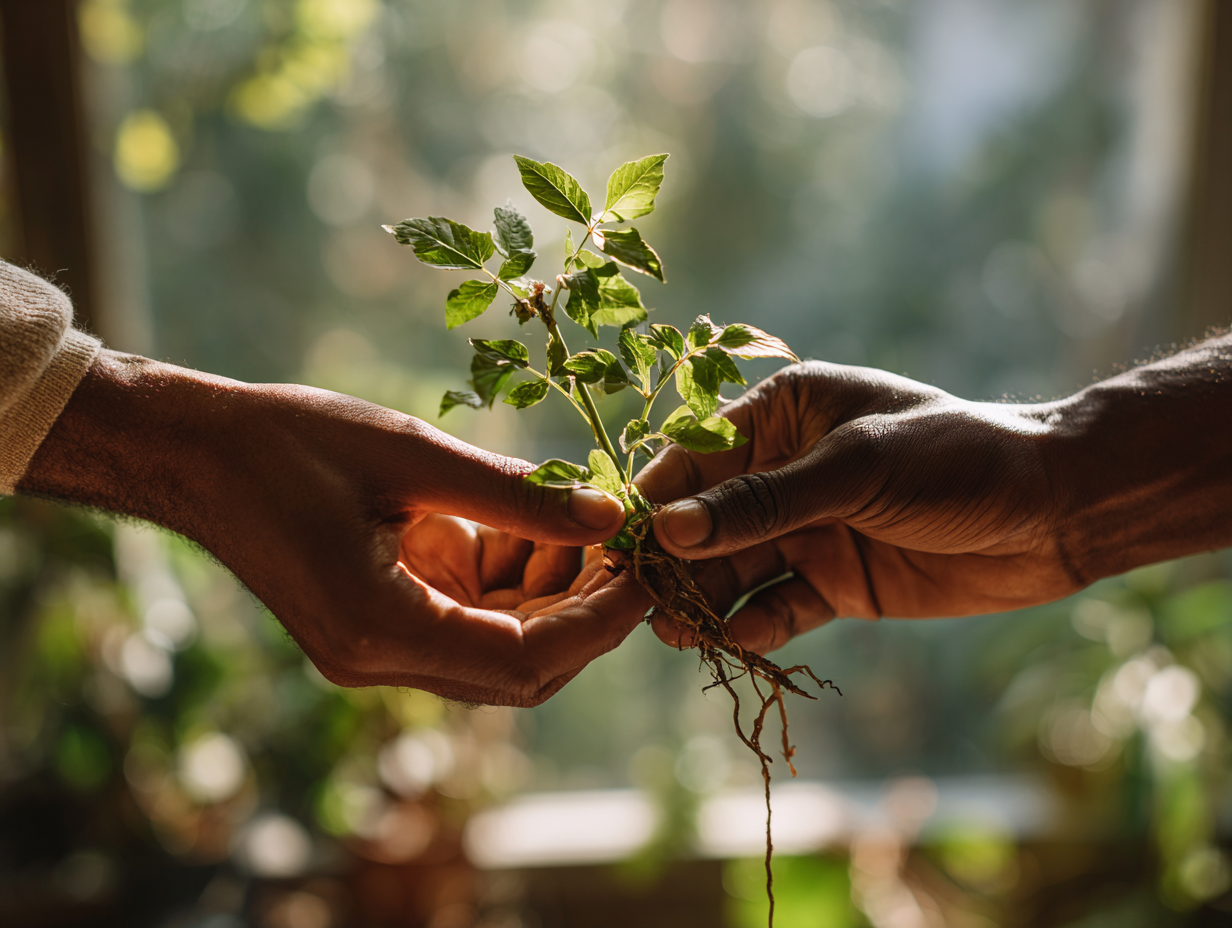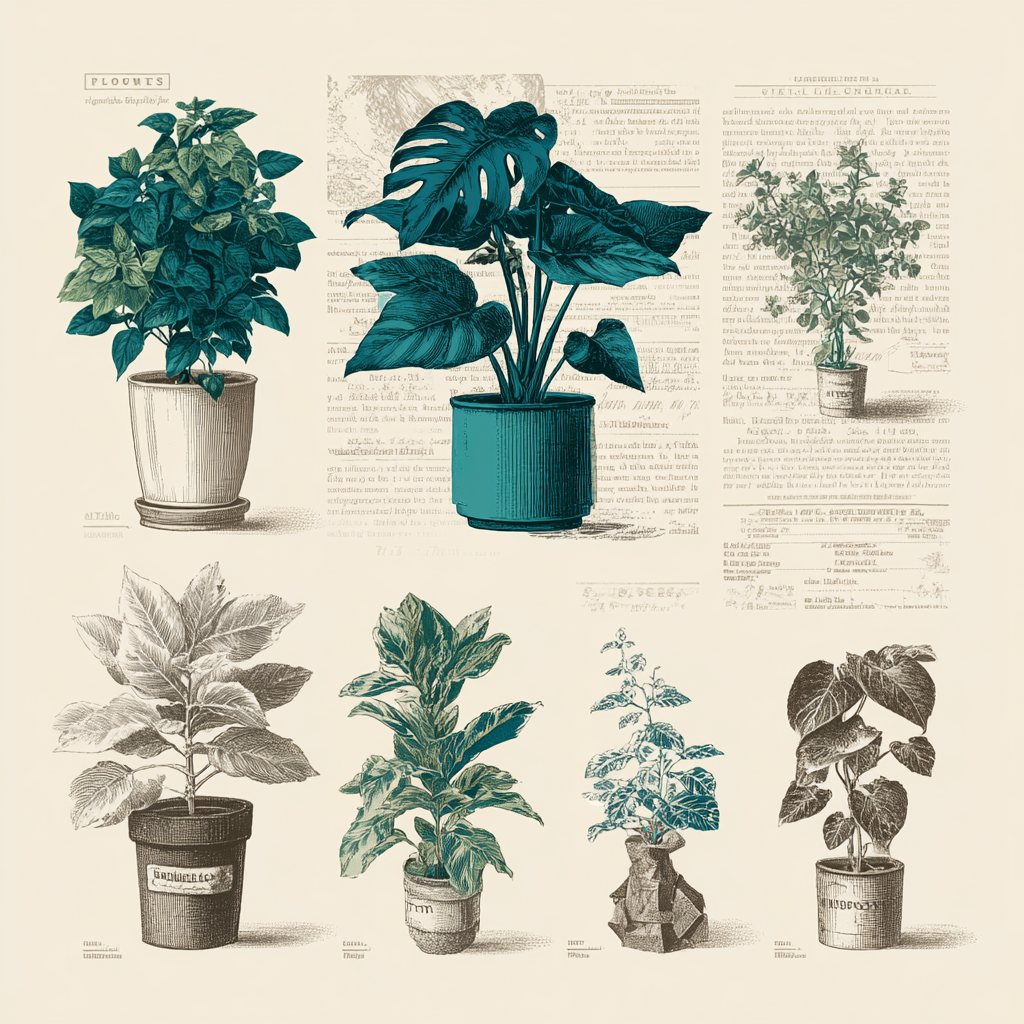Free Plant Trading Glossary & Etiquette Guide
Get our comprehensive guide to plant trading terms, etiquette rules, and community insider tips to feel confident in any plant group.
Download Free GuideEntered a plant Facebook group and felt like everyone was speaking a different language? You're not alone! Plant trading communities have developed their own rich vocabulary and unwritten rules. Master this "secret language" and you'll feel at home in any plant community.
Why Plant Communities Have Their Own Language
Like any passionate community, plant people have developed specialized terminology that makes communication more efficient and precise. What might sound like jargon to outsiders is actually a detailed vocabulary that helps plant parents communicate exactly what they mean – from plant condition to trading preferences.
Understanding this language isn't just about fitting in; it's about being a better trader and community member. When you know the terminology, you can ask better questions, describe your plants accurately, and avoid misunderstandings that can derail a good trade.
Essential Plant Trading Vocabulary
🌱 Plant Condition & Size Terms
🏷️ Plant Rarity & Desirability

🔄 Trading Terms & Etiquette
📱 Social Media & Community Terms
Unwritten Rules of Plant Trading
✅ The Golden Rules:
Always be honest about plant condition
Include photos showing any damage, pests, or issues. Reputation matters in small communities.
Communicate promptly and clearly
Respond to messages within 24-48 hours. If plans change, let people know ASAP.
Package plants with care
Use appropriate protection, padding, and weather considerations. Your reputation depends on plants arriving safely.
Follow through on commitments
If you say you'll trade, honor that agreement. Don't back out for a "better" offer.
Be patient with new traders
Everyone was new once. Help newcomers learn the ropes instead of excluding them.
❌ What Not to Do:
- • Don't ghost people - Always respond, even if it's "not interested"
- • Don't lowball on rare plants - Understand relative values before making offers
- • Don't post the same ISO daily - It's considered spammy in most groups
- • Don't sell in trade-only groups - Read group rules carefully
- • Don't ask for "mother plant" cuttings - This can damage or kill established plants
- • Don't expect free shipping - Shipping costs are typically shared or paid by recipient
Decoding Plant Swap Posts
Learning to read between the lines in plant swap posts is a skill that comes with experience. Here's how to interpret common phrases:
🔍 Reading the Subtext:
Building Your Reputation
In plant trading communities, reputation is everything. A good reputation opens doors to rare plant trades, while a poor one can get you excluded from groups. Here's how to build and maintain a stellar trading reputation:
🌟 Reputation Builders
- • Post "arrived safely" photos
- • Give detailed, honest plant descriptions
- • Pack plants with obvious care
- • Include handwritten thank you notes
- • Share updates on traded plants
- • Help newcomers with advice
- • Follow group rules consistently
⚠️ Reputation Killers
- • Sending plants with undisclosed pests
- • Poor packaging resulting in DOAs
- • Backing out of agreed trades
- • Not responding to messages
- • Misrepresenting plant variety or size
- • Arguing with moderators publicly
- • Breaking group rules repeatedly
Your First Trade: A Step-by-Step Guide
Step 1: Start Small
Begin with common plants like pothos or tradescantia. Build confidence and reputation before attempting rare plant trades.
Step 2: Take Great Photos
Show the whole plant, close-ups of leaves, roots (if applicable), and any imperfections. Good lighting makes a huge difference.
Step 3: Write Detailed Descriptions
Include size, age, pot type, care routine, and any issues. More information is always better than less.
Step 4: Research Fair Trades
Look at completed trades in the group to understand relative plant values before making or accepting offers.
Step 5: Communicate Clearly
Confirm all details: plants being traded, shipping arrangements, timing, and any special care instructions.
Beyond the Basics: Advanced Community Participation
Once you're comfortable with basic trading, you can deepen your community involvement:
- Become a plant mentor: Help new members learn the ropes and avoid common mistakes
- Organize local meetups: Facilitate in-person plant swaps in your area
- Share knowledge: Post care tips, identification help, and educational content
- Moderate discussions: Help maintain positive, welcoming group culture
- Document your journey: Share propagation progress and plant growth updates
Remember, plant trading communities thrive on mutual support, shared knowledge, and genuine enthusiasm for plants. The "secret language" isn't really secret – it's a welcoming invitation to join a passionate community of plant lovers who are eager to share their knowledge and plants with others who share their enthusiasm.
Ready to Join Our Welcoming Plant Community?
Connect with friendly plant parents who speak your language – whether you're a beginner learning the ropes or an experienced trader looking for your next rare find.
Join Our Plant Trading Community